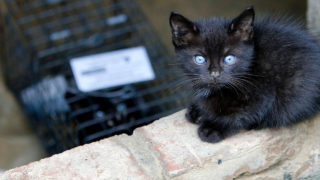Published in the The Panama City News Herald on February 21, 2017.
It’s perfectly normal for cats to live outside.
It’s astonishing that PETA, which claims to advocate for animal rights, continues to promote misconceptions about community cats and rabies, as it did in a Feb. 9 letter, “Take care of your cats.”
Rabies is often misguidedly used to justify the continued use of “roundups” of feral or community cats, which has resulted in decades of failed catch-and-kill schemes. But the facts tell us that effective rabies control actually represents a public health victory. There has not been a single case of a human contracting rabies from a cat in more than 40 years in the U.S. The Centers for Disease Control even says human rabies cases are “rare,” with only one to three cases reported annually, and with infections coming from dogs, bats and raccoons but not cats.
To say that “cats are not safe outdoors” is another huge fallacy that ignores history. Only with the arrival of kitty litter 60 years ago did it even become practical for cats to live inside with us in the first place until then, they lived outdoors exclusively. Studies show that cats can live healthy, full lives outdoors. The truth is that it’s just as natural for cats to live outside now as it was in the thousands of years before they were domesticated.
For those of us who choose to help community cats, Trap-Neuter-Return is the only humane approach with a proven record of success. Adopted by more than 600 communities, it stops the breeding cycle, vaccinates cats against rabies, improves cats’ lives and improves their relationships with the people who live near them. Removing cats from their outdoor home and into shelters is effectively a death sentence — far short of being ethical treatment of animals.
Becky Robinson
Bethesda, Md

